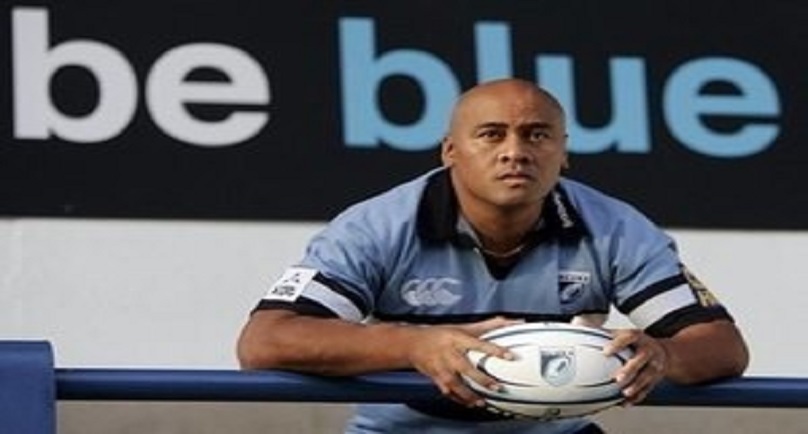Image:Jonah Lomu poses for photographers during a news conference in Cardiff, south Wales, November 14, 2005 file photo. REUTERS/Darren Staples/Files
![]()
WELLINGTON (Reuters) – All Blacks great Jonah Lomu, who revolutionised wing play to become rugby union’s first global superstar, died on Wednesday in Auckland at the age of 40.
Former All Blacks doctor John Mayhew told TV3 that Lomu, who had a kidney transplant in 2004, had died unexpectedly, while New Zealand Rugby later stated they were “shocked and deeply saddened” by his death.
“We’re lost for words and our heartfelt sympathies go out to Jonah’s family,” chief executive Steve Tew said on Twitter.
“Jonah was a legend of our game and loved by his many fans both here and around the world.”
Lomu, who was awaiting another transplant and undergoing dialysis treatment, had undertaken commercial obligations at the recent Rugby World Cup in England before returning home.
He played 63 tests on the wing for New Zealand, scoring 37 international tries.
Those bare statistics, although impressive enough, tell only part of the story with Lomu’s deeds accomplished while he battled nephritic syndrome, a disease that attacked his kidneys and necessitated the transplant in 2004.
Initially plucked from obscurity as an 18-year-old by All Blacks coach Laurie Mains, Lomu found his transition from the loose forward position he played at secondary school to the wing a challenge.
He was dropped after his first two tests against France in 1994 and barely made Mains’ Rugby World Cup squad in 1995 after being deemed not fit enough for the fast-paced game the coach wanted to play.
Lomu’s performances at the tournament in South Africa, however, electrified the rugby world as he scored seven tries, four in the semi-final against England alone with one when he trampled over fullback Mike Catt leaving many speechless.
The pace and power displayed by the 1.95m tall and 119kg Lomu changed the wing position with the traditional lightweight flyer gradually all but disappearing from the test game.
The ravages of Lomus’s disease had begun to affect him by 1998, however, and his performances went downhill, although he still made the 1999 World Cup and scored eight tries before playing his last test against Wales in 2002.
(Reporting by Greg Stutchbury, editing by Greg Stutchbury)
Copyright 2015 Thomson Reuters. Click for Restrictions.


